Home » Kitchen Renovation (Page 2)
Category Archives: Kitchen Renovation
VA-Based Supplier Dave’s Cabinet is Acquired
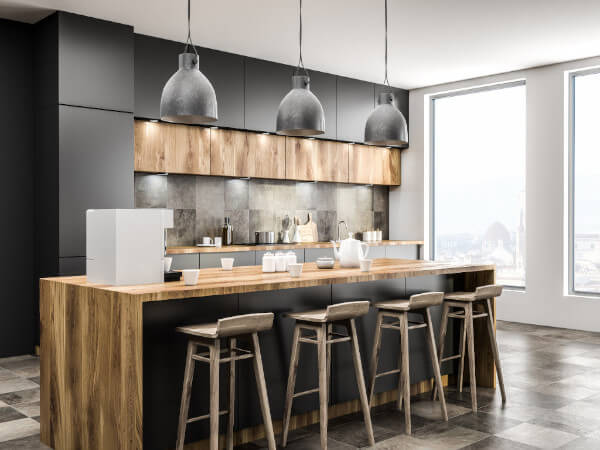
CHESAPEAKE, VA — Dave’s Cabinet, a leading cabinet manufacturer in the Mid-Atlantic region, has announced that the ownership interest of company founder David Alderman CMKBD, has been purchased by John K. Morgan, CEO of Green Forest Cabinetry.
Terms of the transaction were not disclosed.
Dave’s Cabinet, founded in 1980, occupies three manufacturing buildings on approximately 40 acres of land in Chesapeake, VA. The business consists of a fully equipped end-to-end cabinet manufacturing/finishing facility, a retail division, plus a modern granite/quartz fabrication unit.
“I am incredibly proud of the 40+ years of Dave’s Cabinet’s success, especially the commitment and work to better our local community,” said Morgan, who, along with Alderman, is a past president of the National Kitchen and Bath Association (NKBA).
“I could not be more pleased to have the opportunity to lead his legacy to the next level of tomorrow’s micro-manufacturing world,” Morgan added.
Under the terms of the agreement, Julie Boone will retain her existing ownership interest in Dave’s Cabinet, said the company, which also announced a continuation of an annual $5,000 grant/scholarship to both the Great Bridge Baptist Church, a local parish, and the student program at the NKBA nationally.
The post VA-Based Supplier Dave’s Cabinet is Acquired appeared first on Kitchen & Bath Design News.
Spotlight Kitchens of November – Cabinet Refacing
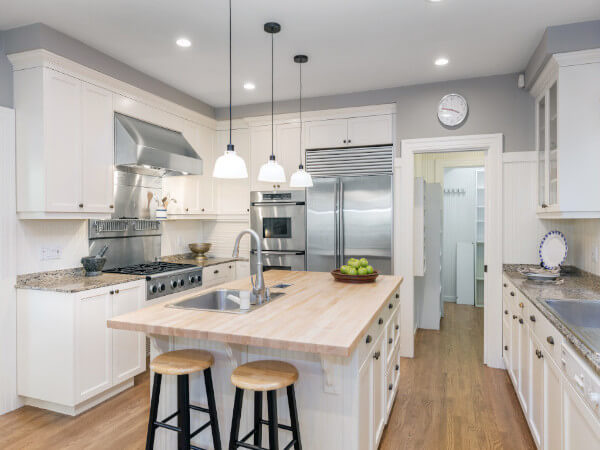
- Project Location: Menomonie, WI
- Remodel type: Cabinet Refacing and New Cabinetry
- Type of door style: Mission
- Remodel style: Transitional
- Color: Classic White and Black
- Door Material: Maple
- Countertop: Cambria
- Countertop Color: Hollinsbrook
- Backsplash: White Subway Tile
For more information about this project, please visit Kitchen Solvers of Eau Claire’s Gallery page.
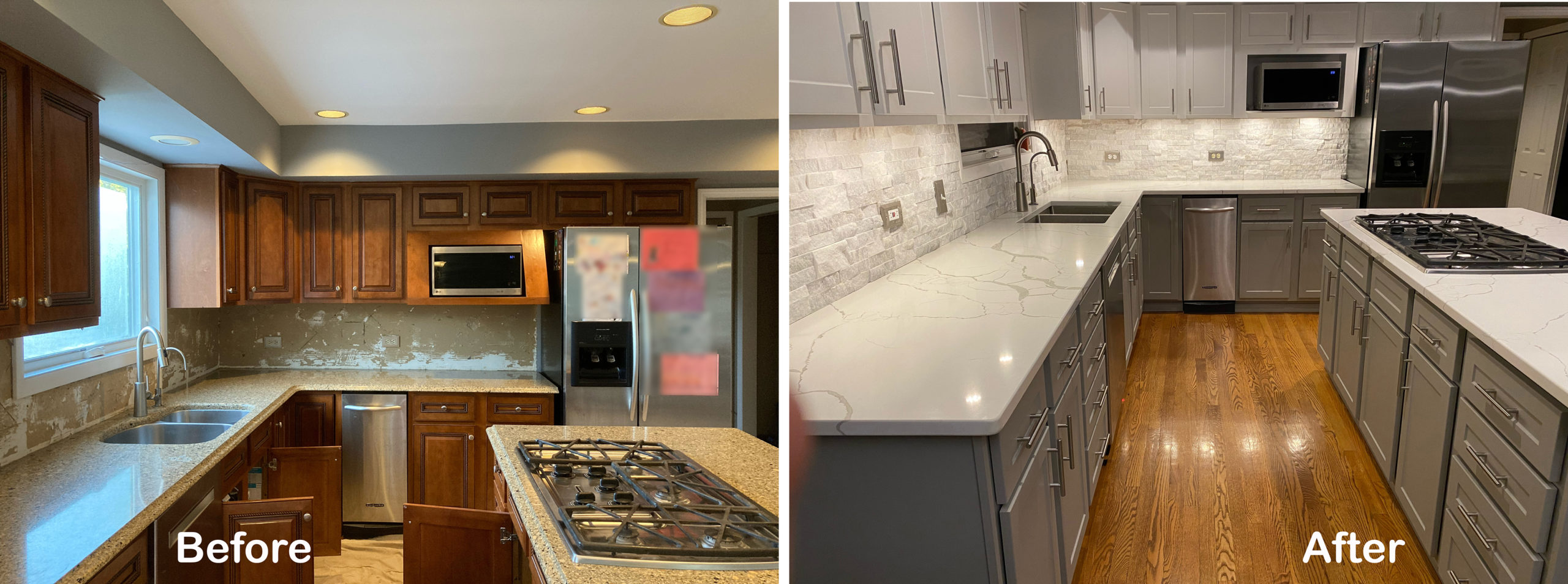
- Project Location: Hawthorn Woods, IL
- Remodel type: Cabinet Refacing and New Cabinets
- Type of door style: Shaker
- Remodel style: Modern
- Color: Ontario white for uppers and Haze Supermatte for lowers
- Countertop: Quartz
- Countertop color: Calacatta Laza
For more information about this project, please visit Kitchen Solvers of Grayslake’s Gallery page.
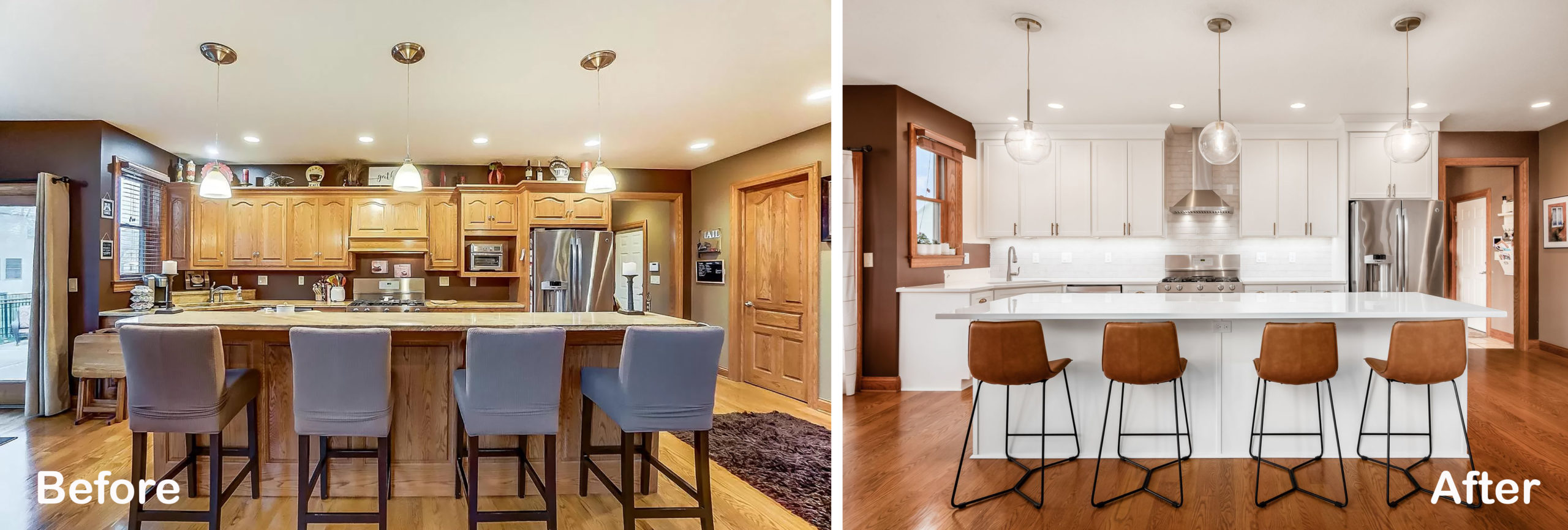
- Project Location: Pickerington, OH
- Remodel type: Cabinet Refacing
- Type of door style: Shaker
- Remodel style: Modern
- Color: Stratus Super Matte
- Countertop: Quartz
- Countertop color: Bianco Fumo
- Backsplash: Canvas La Belle Purity polished ceramic
For more information about this project, please visit Kitchen Solvers of Columbus’ Gallery page.
The post Spotlight Kitchens of November – Cabinet Refacing appeared first on Kitchen Solvers.
Kitchen of the Month Winner for Cabinet Refacing for November
Kitchen Transformation by Kitchen Solvers of La Crosse
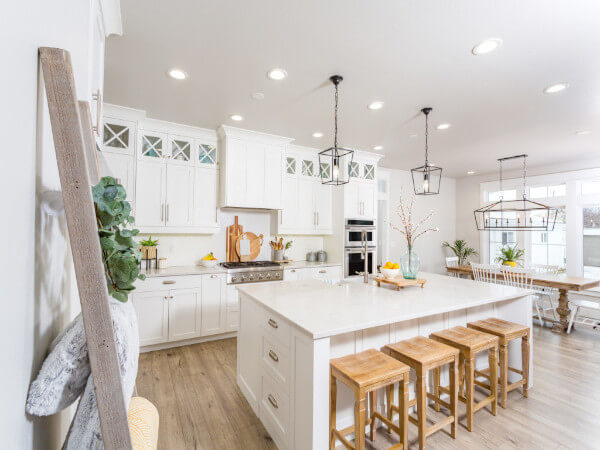
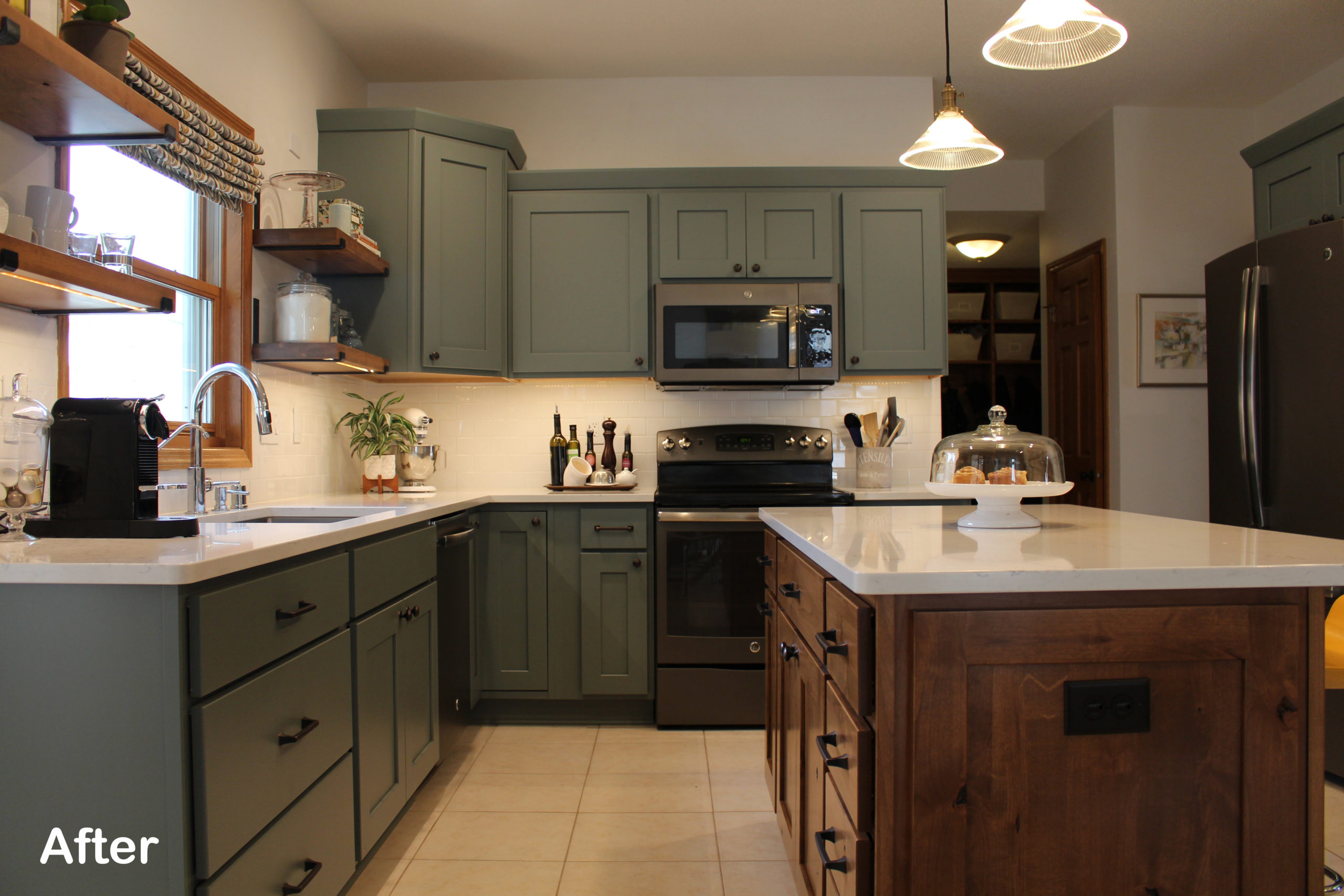
Project Location: Onalaska, WI
Remodel type: Cabinet Refacing
Type of door style: Shaker
Remodel style: Transitional
Color: Spruce on Maple for Perimeter and Medium Brown Walnut Stain on Rustic Alder for Island
Countertop: Quartz
Countertop color: Viatera Muse
Backsplash: 3” x 6” arctic white tile
For more information about this project, please visit Kitchen Solvers of La Crosse’s Blog.
Find a location near you.
The post Kitchen of the Month Winner for Cabinet Refacing for November appeared first on Kitchen Solvers.
Did you miss our previous article…
https://www.texaspiekitchen.org/?p=826
Common Questions to Ask When Beginning Your Kitchen Remodel
Your kitchen is the heart of your home serving a multitude of purposes for you and your loved ones. When it comes to the heart of your home, you want to make sure it’s entrusted to someone who will respect and cherish it. That’s why choosing a remodeler is one of the most important steps in your remodeling journey. But, how do you know which remodeler is right for your unique project? Follow these 4 commonly asked questions when beginning your remodel journey to ensure your home and vision are taken the upmost care of.
1. What experience do you have with this type of remodeling project?
Remodeling contractors often have different skill sets and while one might have done a great job on your neighbor’s garage or backyard shed, that doesn’t make them qualified to remodel your kitchen or bathroom. Ask potential contractors for a list of past projects they have completed that are similar in scope to what you have in mind. Don’t hesitate to contact prior customers for their thoughts on contractors work quality, adherence to schedule, and overall competence. The same can also be true when considering the dollar amount of a project – a $30,000 kitchen remodeling project often requires a different level of expertise than one that costs $3,000.
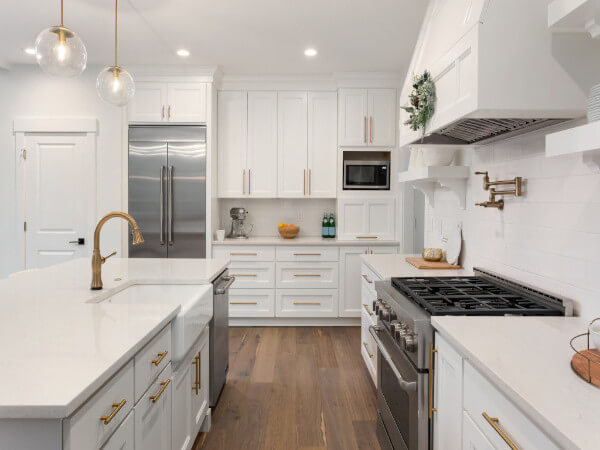
2. Can You Work Within My Budget?
The perfect kitchen design doesn’t do you much good if it’s out of your price range. Discussing budget early on will allow a designer to give you an idea of whether or not they will be able to work within your budget. You don’t want to work with a designer who only designs with very high-end, expensive products, if your budget is more in the middle range for kitchen remodels. Be honest and firm with your kitchen designer about your budget and early on make sure your remodeling dreams are feasible with your budget.
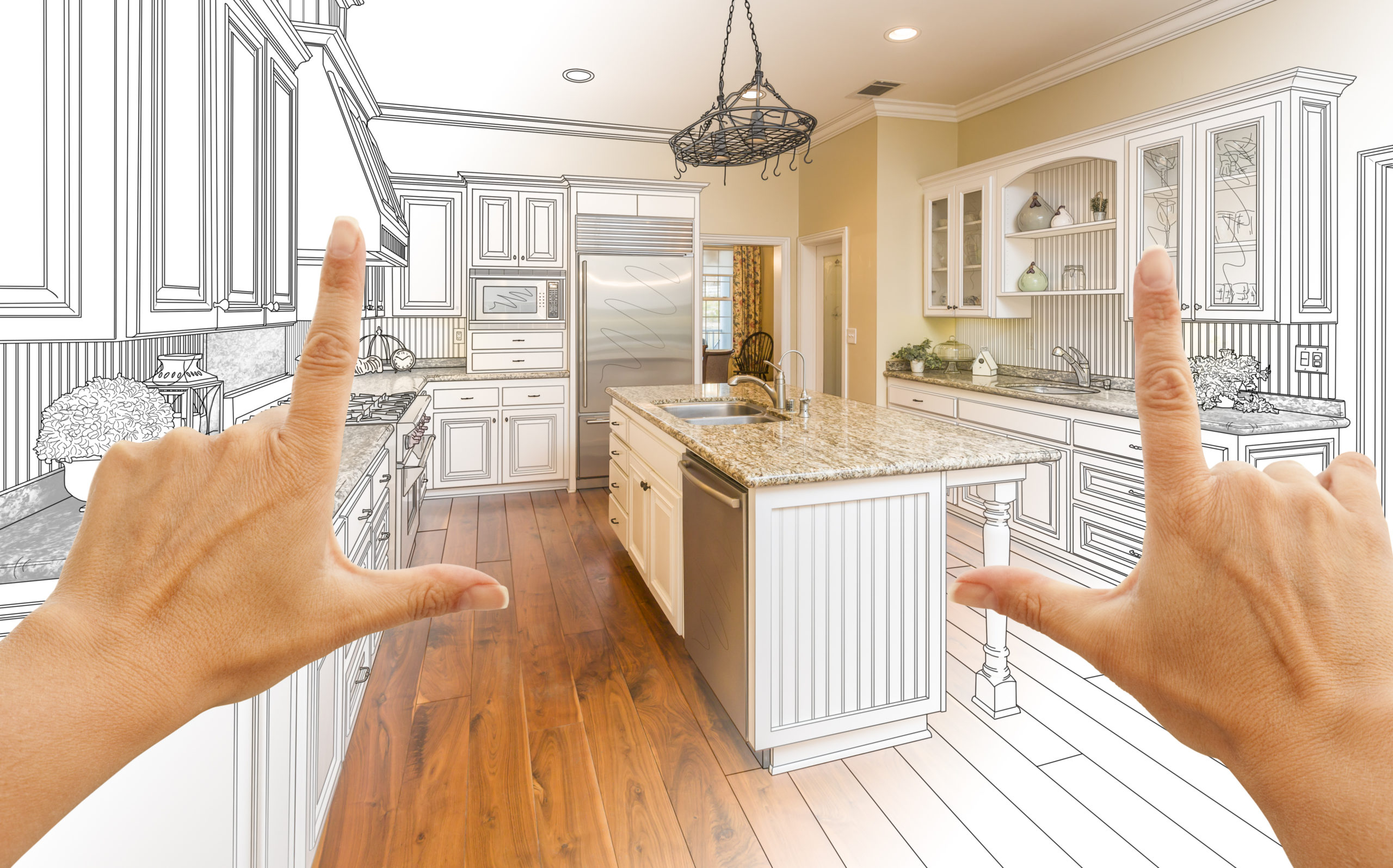
3. How Much Input Will I Have?
Hiring a kitchen designer is for the sole purpose of creating a space that suits the needs and desires of you and your family- not a kitchen that demonstrates their talent for design. An excellent kitchen designer should take time to find out what remodeling ideas you have, your family’s lifestyle, and even tie their work in with the overall style of your home. Find a kitchen designer who is willing to make your ideas be at the center of the project not backstage.

4. Can I Review Examples of Your Past Work?
Samples of past kitchen design work is a must. You need to know if the designers have experience creating a number of different kitchen design options and ideas to consider. You should eliminate any kitchen designers who seemingly use the same design elements over and over again. Instead, you want a designer who can be versatile and eclectic in style and design choices. You want to interview designers who are creative thinkers with the ability to clearly communicate their design concepts.
Kitchen Solvers
At Kitchen Solvers, we want to ensure that you, the homeowner, protect and preserve your beautiful kitchen. The most important factor in how to make a kitchen remodel easy is getting help from professionals. At Kitchen Solvers, our expert design team can help you create the ultimate kitchen that fits your budget and offers some of the best features and styles available.
And be sure to read our helpful articles: How to Make a Kitchen Remodel Easy and Confused about Cabinet? A Guide to a Cabinet Reface or Replace!
The post Common Questions to Ask When Beginning Your Kitchen Remodel appeared first on Kitchen Solvers.
Did you miss our previous article…
https://www.texaspiekitchen.org/?p=808
Anticipation Builds for In-Person KBIS 2022
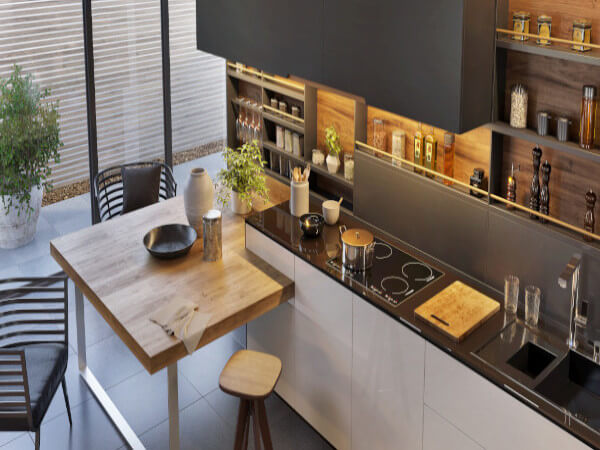
HACKETTSTOWN, NJ – As the year comes to a close, many in the kitchen and bath industry are looking ahead to the return of the Kitchen & Bath Industry, the largest North American event dedicated to this segment of the market. With safety protocols and procedures in place, professionals are celebrating a return to an in-person exhibit and educational forum, where they can learn, reconnect and recharge for a promising business future.
Once again scheduled to be part of Design & Construction Week with the International Builders Show, the Kitchen & Bath Industry Show is scheduled to be held February 8-10, 2022 at the Orange County Convention Center in Orlando, FL. KBIS and IBS, hosted by the National Kitchen & Bath Association and the National Association of Home Builders, respectively, are expected to feature over 800,000 net square feet of exhibit space and showcase more than 1,000 design and construction brands.
While the event is still several weeks away, Kitchen & Bath Design News is offering this sneak peek at just a few of the products that will be on display.
The post Anticipation Builds for In-Person KBIS 2022 appeared first on Kitchen & Bath Design News.
Millennials’ Impact Seen Increasing for 2022 Kitchen, Bath Designs
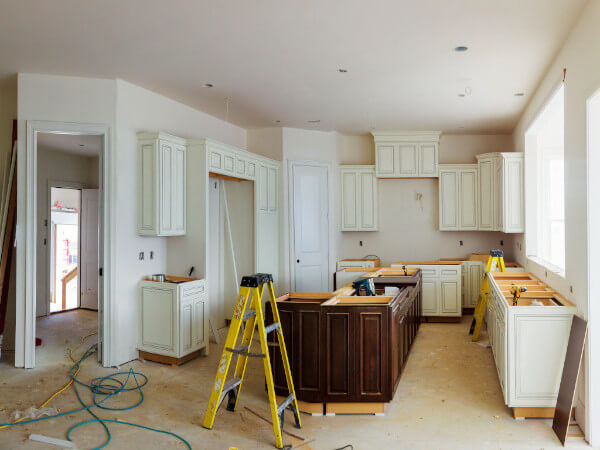
HACKETTSTOWN, NJ — Millennial clients – particularly those with children – are increasing in influence while the impact of Baby Boomer clients is gradually declining and Gen X is remaining constant, according to a 2022 Design Trends Forecast released this week by the National Kitchen & Bath Association.
The NKBA’s annual design trends forecast points to a gradual, yet palpable, shift in the primary customer base for new and remodeled kitchens and baths, after several decades in which the market was driven largely by a huge cohort of Baby Boomers (aged 57-75) and Gen Xers (aged 41-56) consumers.
While baby boom and Gen-X consumers remain the industry’s predominant buying force, the steady increase in business from Millennial clients (ages 25-40) is increasingly impacting both market share and anticipated kitchen and bath design trends, according to the NKBA, which said Millennials’ impact has “a high probability of increasing in the future.”
“Those working with Millennials see slightly less-expensive projects, but that’s likely driven by Millennials’ lower disposable income during their current life stage,” said the NKBA, whose 2022 Design Trends Forecast was based on a survey of approximately 650 designers, dealers, and other design professionals. The survey’s aim was to identify styles, features and materials that are expected to be more popular in the next several years; to identify the products that have the most dramatic impact on today’s kitchens and bathrooms; to assess if there are notable variations in designer client base profiles; and to predict if client base profiles are predictors of perceived design trends.
Among the overarching themes emerging from the NKBA’s 2022 survey is that kitchen clients generally want flex space for work, touchless fixtures, easy-to-clean surfaces, outdoor living areas, LED lighting and recycling storage. There is also a concerted desire for mobile-friendly spaces, healthy cooking, app-controlled appliances and voice-activated lighting, the NKBA said.
In the bathroom, consumers want a large shower, and are likely to remove tubs in order
to allocate more space or access to storage/dressing areas, the NKBA said. There is also a pronounced need for energy and water efficiency, connected products such as water temperature controls, entertainment and communication, the association added.
In general, new kitchen and bathroom design is emerging from nature-inspired themes, the NKBA reported. “Organic, natural styles are prominent in both kitchens and bathrooms, especially among Millennials, (and) increased natural light with large, high-performance windows and doors for outdoor access will be prominent,” the NKBA said.
“Homeowners have a desire for spaces that can multi-function,” the NKBA observed, pointing to a growing trend toward large islands for food prep that also function as dining tables, homework and work from home; flexible space for home office activities; pantries that include space for storage and a working area for small appliances; and workstation sinks with built-in features (drying racks,
cutting boards, etc.) In addition, bathrooms that connect to dressing areas and/or laundry facilities, and vanities and medicine cabinets with outlets are also experiencing increased popularity.
When designing new spaces, homeowners are generally thinking about the following:
n Cleanliness: easy-to-clean surfaces and countertops that are sanitary and non-porous. The current strong demand for quartz is expected to continue, as are the popularity of larger-format tile or slabs with less grout, and touchless faucets.
n Sustainable design: 100% LED lighting; a dedicated recycling area; low-E windows and doors; Energy star/efficient products; EPA WaterSense fixtures; VOC-free paint; products with recycled materials, and radiant flooring.
n Universal design: spaces that will allow for aging in place; curb-less showers; fewer free-standing tubs, grab bars, seats in showers and-held shower heads.
Although homeowners are excited about integrated technology, it is not being utilized in most projects. Specifically, only 30% and 21% of kitchen and bath projects, respectively, include integrated technology features, the NKBA reported.
“Designers have new ways to interact with their clients, especially Millennials,” the NKBA said. “Future design projects will include a mix of in-person and virtual meetings. In-person meetings both in designer’s offices and at the client’s home will be most prominent.
“Designers will (also) take advantage of virtual channels with video calls and video meetings with clients,” NKBA researchers added. “Millennials are more open to virtual meetings while Boomers are looking for regular onsite meetings at their home.”
The post Millennials’ Impact Seen Increasing for 2022 Kitchen, Bath Designs appeared first on Kitchen & Bath Design News.
Did you miss our previous article…
https://www.texaspiekitchen.org/?p=802
Challenges Persist as 2021 Winds to Close
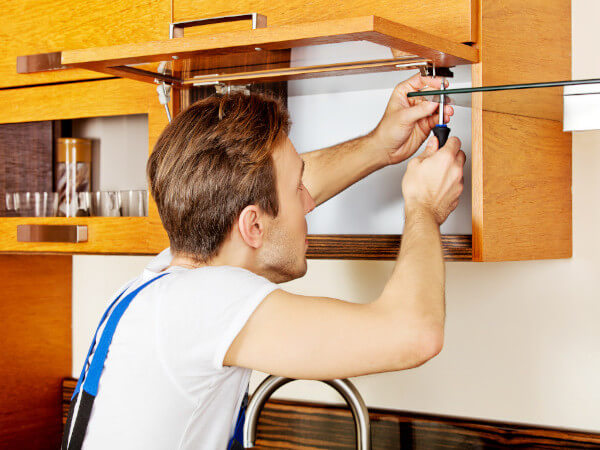
The U.S. housing and residential remodeling markets continued to post gains as 2021 wound to a close, although COVID-related supply chain disruptions, coupled with labor and materials shortages, continued to put a crimp on more-robust growth. Among the key statistics and forecasts released in recent weeks by government agencies, research firms and industry-related trade associations were the following:
RESIDENTIAL REMODELING
Demand for remodeling remains strong, and remodelers “are doing quite well as long as they can adequately deal with material and labor shortages,” according to the latest Remodeling Market Index (RMI) compiled by the National Association of Home Builders. The Washington, DC-based NAHB last month released its NAHB/Royal Building Products Remodeling Market Index (RMI) for the third quarter of 2021, posting a reading of 87, up five points from the third quarter of 2020. The finding is a signal of residential remodelers’ confidence in their markets, for projects of all sizes, the NAHB said. “We are seeing strong demand and continued optimism in the residential remodeling market, despite the fact that supply constraints are severe and widespread,” said NAHB Chief Economist Robert Dietz. “For example, well over 90% of remodelers in the third quarter RMI survey reported a shortage of carpenters. And 57% of remodelers reported having slightly raised prices for projects over the last six months, with another 28% indicating a significant increase in price, due in part to higher material costs and ongoing strong demand. Half of these remodelers reported some pricing out of demand due to higher prices for remodeling projects.”
HOUSING STARTS & NEW-HOME SALES
Single-family home sizes are reportedly rising as an offshoot of the COVID-19 pandemic, reversing a recent trend toward downsizing, as homeowners are seeking additional residential space for a wider range of purposes, particularly teleworking and school-related activities. According to the National Association of Home Builders, the median size of a newly built single-family home increased to 2,297 sq. ft., while the average size for new single-family homes increased to 2,540 sq. ft. Following Great Recession lows, home sizes rose between 2009 to 2015, as entry-level new construction was constrained, according to the NAHB. In contrast, home sizes declined between 2016 and 2020, as more starter homes were developed, the NAHB said. “Going forward, we expect home sizes to increase again, given a shift in consumer preferences for more space due to the increased use and roles of homes in the post-COVID-19 environment,” said NAHB’s Dietz.
EXISTING-HOME SALES
Current high prices are resulting in “an unbalanced market,” although home prices would “normalize with additional supply,” according to the chief economist for the National Association of Realtors. Total housing inventory, according to the latest NAR figures, was down 13.4% from one year ago. Unsold inventory sat at a 2.6-month supply at the current sales pace, down from 3.0 months at the same time last year, the NAR reported. The median existing-home price was up 14.9% from the same time in 2020. The market has witnessed more than 100 straight months of year-over-year gains, the NAR noted, adding that the pace of price appreciation has outpaced wage gains, “making homeownership increasingly unattainable.”
The post Challenges Persist as 2021 Winds to Close appeared first on Kitchen & Bath Design News.
Did you miss our previous article…
https://www.texaspiekitchen.org/?p=799
Wrapping 2021 and Looking Ahead
What a long, strange year it’s been! Let’s take a look back at the dominant 2021 trends and anticipate what 2022 will likely bring.
While it’s hard to predict with clarity, given some major unknowns, here are some hot takes from across the industry and the country from unique perspectives:
- San Diego-based designer Tatiana Machado-Rosas, Jackson Design and Remodeling’s design department manager;
- Long Island, New York-based kitchen and bath designer Susan Serra;
- Home Technology Association CEO Josh Christian;
- Bob Gifford, business development director for luxury retailer Hastings Tile & Bath in New York City;
- Susan Chung, research v.p. with the American Society of Interior Designers;
- Boise, Idaho-based custom home builder Emily Clark of Clark & Co. Homes.
Wellness Trends Accelerate
Designers have been focused on wellness for decades with interest from some clients, but the pandemic really drove its importance home. Literally! “For 2021, a continued focus on health and hygiene helped drive the kitchen,” observes Chung. She also sees its importance elsewhere, noting that “the bathroom really became a place to escape the stress and fear of the outside world.” Wellness showed up in outdoor, work from home and mindfulness spaces, too. “As the home became a hub for all types of activities colliding together, homeowners were looking to design as one way to alleviate stress and promote tranquility,” the ASID executive concludes.
Beyond the spaces noted above, wellness showed up in related rooms. “The switch from what had been called the ‘mud room’ to what is now called the ‘utility room’ or pre-wash area; so many people wanted a location to drop groceries and sanitize items before heading into their homes,” shares Gifford. This is tied to an increasing interest in hands-free functionality, he explains: “Soap dispensers, faucets, hand-towels – anything and everything that gave people a sense of comfort and control over their environment.”
Kitchen Design Trends
“Multipurpose kitchens with open floor plans continued to be a strong trend as clients look to make their kitchen the vibrant heart of their home,” says Machado-Rosas. “Integrating smart technology, particularly with more people using the kitchen space to work from home or attend virtual classrooms, became even more essential. In addition, clients had a renewed interest in keeping their spaces hygienic, which led to a desire for easy-to-maintain materials for countertops and flooring,” she adds. The design manager conversely sees a resurgence in natural stone for sinks and countertops, attributing it to a desire for the sense of calm that comes from a connection to nature.
Across the country, Serra sees three dominant trends: “Wellness on steroids, cooking convenience and visual comfort.” Health and cleanliness were the top concerns she was hearing from clients. This included “performance materials in surfaces, as well as appliances [and fixtures] that promote healthy living and preserve our health, such as renewed attention to proper ventilation, enhanced touchless faucets and larger sinks going mainstream – often with two faucets” as a few examples.
Changes in shopping and eating habits are also influencing kitchen design, the New York designer believes. “A new hybrid type of cooking has emerged; time (but not too much) is being taken to create healthy homemade meals from fresh, quality foods, assisted by smart, efficient appliances. The purchase of a freezer for bulk food storage, better cabinet storage solutions and designing in more countertop space creates a near utopia for one or more cooks.”
Visual comfort is also a trend, Serra has observed. “As the kitchen has taken on more lifestyle functions in the past 18 months, homeowners are much more open to creative design solutions,” she shares. This has meant larger windows, nature-inspired texture and finish mixes, and comfortable dining areas with flexible designs or banquettes. “The transition of the kitchen aesthetic to more seamlessly integrate with surrounding rooms lessens the perception of the kitchen as workspace and nudges it more toward a living space,” she suggests.
Clark has also seen kitchens evolve, she comments, citing an “expansion of the scullery or the working pantry, work zones as opposed to a work triangle, and multiple mini-kitchens for multi-generational living.” Antimicrobial counters, touchless faucets and chef sinks also support healthy living and cooking, the home builder notes. Natural finishes, warm woods and creative design solutions with saturated cabinet colors are showing up in her northwestern region too.
Bathroom Design Trends
“The emphasis in bathroom design has been to create a highly customized space that communicates joy and tranquility,” Machado-Rosas observes. “Clients have been seeking a personal retreat with a spa-like atmosphere where they can truly relax.” These have included steam showers, heated floors, statement tubs – sometimes custom – and premium features catering to clients’ personalized needs and desires. Natural materials show up in these luxury bathrooms, too, the San Diego designer notes. “Balancing porcelain or glass tile with natural woods and stones and amplifying natural light have been popular,” she adds.
Clark sees the trend toward personalized luxury in her Idaho homes, as well. These include “sculptural soaking tubs, steam showers with light, sound and aromatherapy, tiles with hand-cut looks and subtle tonal differences, reeded or fluted textures, oversized area rugs and diaphanous drapes.”
“All during 2021, we worked with designers who wanted (and still want) the flexibility to customize their projects by using different colors and finishes for their vanities,” Hastings’ Gifford recalls. “For tubs, the solid surface materials remain popular because they have a supple texture and they are easy to clean and maintain.” The New York retailer also saw strong interest in hands-free faucets with white finishes and versatile wall-mounted vanities.
Technology Trends
Technology continued to trend in kitchen and bath projects, and it shows no sign of slowing. Smart features have a growing presence in kitchens and bathrooms, Home Technology Association CEO Christian notes. “We are seeing entertainment products being installed in kitchens like waterproof TVs built into the counter backsplash, charging docks, tablets for cooking tutorials or recipe surfing, built-in ceiling speakers or a simple wireless speaker on the counter.” He is also seeing sleek, integrated outlets, lighting keypads and flush-mounted concealment systems so that the room’s electronics are present but hidden.
“With bathrooms, we are seeing a lot of circadian rhythm lighting being installed so that time spent in the bath is consistent with a homeowner’s sleep cycles,” he says. Additional bathroom technology trends cited by the designers include smart toilets, enhanced shower systems, built-in sound and lighting systems and smart shadings.
Machado-Rosas sums up the situation this way: “We saw a significant increase in clients asking for fully integrated smart technology in their homes. Because of the combination of enhanced affordability and ease of use, we expect to see this trend grow exponentially in the years to come.”
Predictions for 2022
ASID’s Chung is anticipating that flex spaces, universal design, locally sourced products because of supply line and sustainability concerns will trend in 2022. She also believes that the pandemic has increased the perceived value of designers in helping their clients navigate the challenges brought about by the pandemic.
HTA’s Christian anticipates a strong push toward wellness technology, indoor and outdoor home theater spaces and the death (at least short-term) in ‘just-in-time’ delivery systems. He also sees designers working earlier in the process with technology professionals to more seamlessly integrate their projects.
Hasting’s Gifford predicts the increasing importance of video tours to replace travel and live events where possible. He also anticipates more integrated sink/vanity options, solid surface tubs continuing their popularity and, though no one wants to hear this, he notes, price increases across all products because of the increased costs of raw materials.
Among the designers, Serra anticipates appliances with upgradable technology, more dining space in kitchens, and more storage for multiple cooks. Machado-Rosas expects to see technology show up in more products and for smart home systems to become more affordable, a continued attention to creating calming spaces, multi-purpose rooms, larger pantries and customized bathrooms. She also expects minimalism to trend strongly for its low-
maintenance benefits.
Home builder Clark expects to see more hidden kitchens, induction, multi-function appliances and less upper cabinetry. She anticipates bathrooms getting more artisanal materials, sound and light enhancements for spa effects, and even what she calls family wellness suites. These would resemble high-end spa facilities with steam or sauna areas, grooming stations and central shower stalls.
While 2021 kept many design industry professionals at home, dealing with inventory and other challenges, 2022 is already shaping up to be a more active, in-person kind of year. The Kitchen & Bath Industry Show, paired again with the International Builders’ Show, will meet in person in Orlando in February. Exhibitors reflecting the trends observed by these professionals will be on hand to share their wares. I’ll be there. Will you? 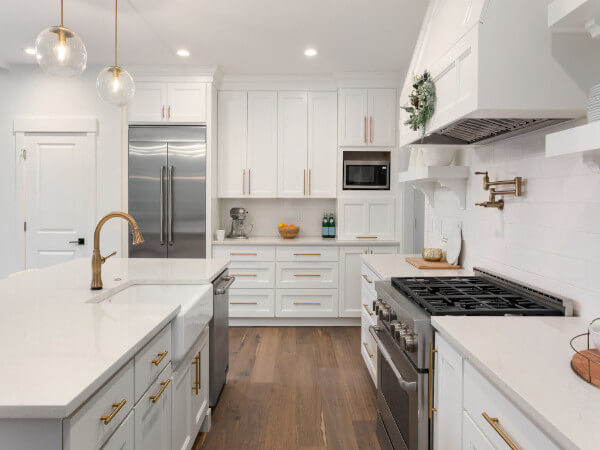
Jamie Gold, CKD, CAPS, MCCWC is an author, wellness design consultant and industry speaker. Her third book, Wellness by Design (Simon & Schuster), published September 2020. You can learn more about her Wellness Market presentations, books, Wellness Wednesdays Clubhouse conversations and consulting services at jamiegold.net.
The post Wrapping 2021 and Looking Ahead appeared first on Kitchen & Bath Design News.
Did you miss our previous article…
https://www.texaspiekitchen.org/?p=796
Examining the Origins of Creativity
Have you ever been asked, “Where did you get that idea?”
Have you ever wondered what creativity is, and where ideas come from? I have – all my adult life. While there are many answers, I think a great one is, “It’s a gift to be shared.”
What I’m talking about specifically here are unique solutions that solve problems, like storage needs and designing for function and safety. Combine these challenges with the homeowner’s desire for a unique appearance that fits their lifestyle, and the result? We have the makings of an award-winning kitchen or bathroom.
Design award applications usually require a summary of how we solved the project owner’s problems, and the recap makes before-and-after photos more relevant. If our entries offer original solutions, they deserve praise. The recognition boosts our confidence.
THE ORIGINS
Where does creativity originate? You’re taking a shower, and an idea flashes out of nowhere. You think to yourself, “What if I…?” You can’t wait to test the reality of your idea on your clients’ plans. From that idea comes another one, and another one. It’s like someone unlocked the vault of ingenious results for you. You’re motivated.
Albert Einstein said, “Creativity is intelligence having fun.” He had intimate knowledge of the universe, and he understood visionary imagination.
As kitchen-bath design specialists, we have a collection of skills and information acquired through our experience. Our intelligence allows us to apply the knowledge to solve problems. But, it’s more than that. Creativity frees our minds to absorb knowledge. It enables alternative ways of thinking.
How do you feel when you discover a spectacular new product at the Kitchen & Bath Industry Show, or in a Kitchen & Bath Design News article? There’s a tingle of excitement, and you can’t wait to solve homeowners’ problems with it. Creativity unblocks our old patterns of thinking. As a result, we’re more receptive to new ideas.
I’ve experienced good luck with product information that got tucked in the “future use file” of my mind. For example, I recommended a Duravit all-glass pedestal lavatory to a new client six months after I learned about it. She still loves it!
And I remember the drop-dead gorgeous Vetrazzo “Sky” countertop that wowed clients when I created a new laundry room for them – two years after discovering Vetrazzo for a blog. Then there was the joy I felt recently, saving a client over $3,000 by substituting bronze plumbing fittings I’d seen in an online newsletter last year.
These experiences are not uncommon for us.
Creativity is fun. We lose track of time when we’re engrossed in creating plans for a client or researching the right products that will make their hearts sing. Getting into a “zone” is like meditating. Experts agree that this helps us live longer. Somehow, we find a way to balance our desire to innovate and perform boring – but necessary – tasks.
Creative ideas are everywhere, always available to us when we need or want to improve our world. One way to explain it is finding a need and then creating a solution. Creativity helps draw out what is already there waiting to be used so that possibilities can emerge. Albert Einstein understood this concept and taught it passionately.
Early in my career, I had a client who wanted to store two sets of eating utensils in her small condominium kitchen with space for only five drawers. I designed a drawer within a drawer, instructing the cabinetmaker to lower the drawer back and then install full-extension glides backward on the top section so it slid back. About six months later, Rev-A-Shelf introduced the same solution for the mass market. So, I was solving an individual need at the same time that Rev-a-Shelf was solving a popular need.
BUILDING CONNECTIONS
Creativity builds intercultural and intergenerational connections.
This is shown by the worldwide acclaim of America’s architectural genius, Frank Lloyd Wright. He died in 1959, at 91. Yet his work still inspires architects and designers 62 years later. Wright was the first architect in history to use cantilevering in his famous Mill Run, Pennsylvania home. He designed “Fallingwater” for Edgar Kaufman in 1935. Evidence of his continuing popularity? Architects and designers are recreating Wright’s “Prairie-style” homes for today’s homeowners.
I love one of the stories about Wright – and there are thousands! He had very little income from his architecture practice for about 12 years (1922–1934). But he kept drawing plans and renderings for residences and public buildings. He also created graphic art for postcards. And he was a prolific writer. Hundreds of his articles appeared in House Beautiful and other popular magazines during that period. His self-promotion paid off. Clients began hiring him in 1934 after they recovered from the depression. He never looked back, proving that creativity is nurturing. Wright had more successful commissions in the last 30 years of his life than he had in the first 61 years!
Like Wright and other well-known innovators, today’s designers will impact future designers. They will inspire and motivate everyone to achieve their own success. We see this in our profession now. Many peers earn honors for their work because they are fearless in their creative expression. Their work will pass the test of time. They are not bound to what’s popular now because they are thinking ahead to the future. They have curiosity and open minds to play the “What if?” game. They often win.
But we see only the wins, not the losses. Creative people have a great habit of learning from every experience. They’re driven to improve themselves and everything around them.
I became aware of this when I taught Western design to Japanese interior design students in San Francisco and gave them a special assignment. They had to create a large master bathroom in a 17’x17′ area. Naturally, they were eager to learn and use the new skills they’d acquired. Not accustomed to large bathrooms, the students had fun uncorking their creativity.
There was one student, Izumi, who lit up the room with her enthusiastic ideas and questions. When it was time to review her plan one-on-one, she was trembling, afraid that I would criticize her work. Her plan wasn’t to scale. But her design was unique and it earned my praise for achieving something radically different. She designed a round bathroom with many windows surrounding a center closet! We joyfully worked together after class, figuring how to make her idea possible.
Like Izumi’s bathroom, I’ve come full circle – back to where I started, with the same question: What is creativity, and where does it come from? The conclusion: Creativity, like love, is an unlimited feeling, indefinable.
No, creativity is love. 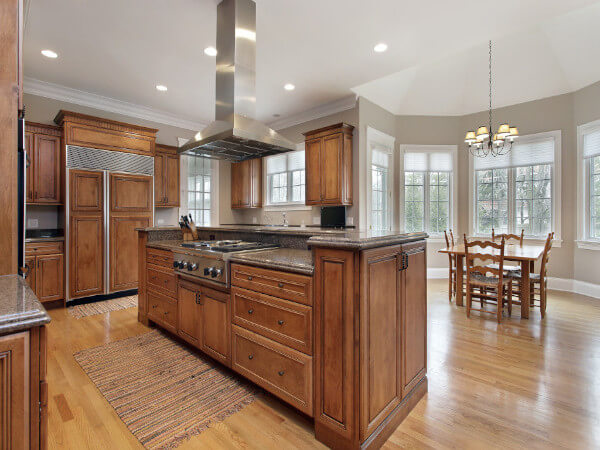
Diane Plesset, CMKBD, CAPS, NCIDQ is the principal of D.P. Design in Oregon City, OR and has over 35 years of experience as a kitchen and bath designer. She is the author of the award-winning book, THE Survival Guide: Home Remodeling, and has been the recipient of numerous design awards. Named a 2019 KBDN Innovator, Plesset has taught Western design to students of the Machida Academy in Japan and has a podcast, “Today’s Home.”
The post Examining the Origins of Creativity appeared first on Kitchen & Bath Design News.
Did you miss our previous article…
https://www.texaspiekitchen.org/?p=790
Sustainability Has Cross-Market Impact
INDIANAPOLIS, IN — A trio of emerging trends in neighborhood design and sustainable living practices should continue to shape the market for new housing and residential remodeling as the “mindset of consumers continues to shift in a dynamic social climate,” according to a new report from the Home Improvement Research Institute (HIRI).
According to HIRI’s recently issued Future of Housing Trend Report, new and remodeled homes will likely be shaped by a “growing homeowner passion” regarding issues such as climate change, sustainability and minimalism –
resulting “in an increased emergence of eco-friendly materials and 3D-printed technology to designs focused on cultural inspiration and reversible architecture.”
Among the key trends identified by HIRI researchers are the following:
Sustainable Housing: With sustainability a top priority, residential architects and designers are embracing different eco-friendly concepts, among them “reversible design” (the architecture of structures that can be easily deconstructed and can be reused or with parts that can be removed and added easily). Also growing as a trend in new construction is 3D-printed housing – homes that offer sustainable and protective construction that avoids structural issues in the case of extreme weather, according to HIRI.
“Contemporary consumers are wary of the impending consequences of climate change, and a large number are becoming increasingly aware that simply shifting their lifestyle and practicing ecological mindfulness are likely not enough,” the Indianapolis, IN-based HIRI said. “As a result, many are demanding that brands and creators take the environment into consideration.”
Simplified Living: Building off of the desire for more sustainable living, the emergence of simple, more minimalist design emphasizes homeowners’ functions and needs, according to HIRI.
“Contemporary consumers in fast-paced urban centers are looking to balance the demands of their daily lifestyle with a comfortable home environment,” HIRI observed. “Many are prioritizing minimalist designs and additional spaces that can optimize and elevate their living situation without compromising aesthetic appeal.”
Flight from the cities: “As urban centers expand in size and population, consumers are recognizing that their quality of life is suffering – whether that be due to alienation, affordability issues, lengthy commutes or pollution,” HIRI said. As a result, many are moving away from city centers and turning to community-based neighborhoods that provide a sense of belonging while also satisfying the need for convenience and cleaner air.
“Hyper-local neighborhoods”: Architects, developers and local governments are proposing neighborhoods that are centered on community building and local businesses, according to HIRI. These neighborhoods are intended to be car-free, with all necessities reachable via a short walk or bicycle ride. 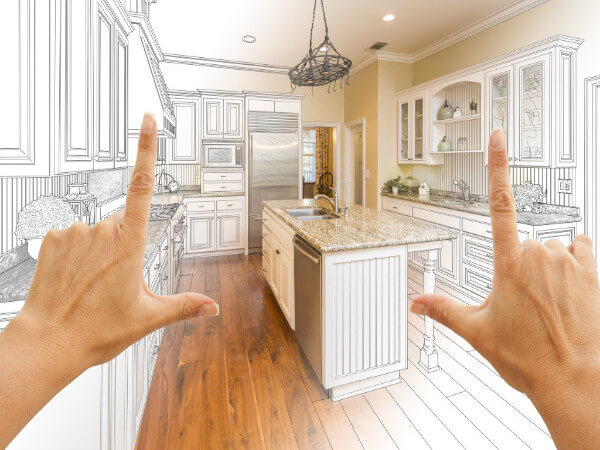
The post Sustainability Has Cross-Market Impact appeared first on Kitchen & Bath Design News.